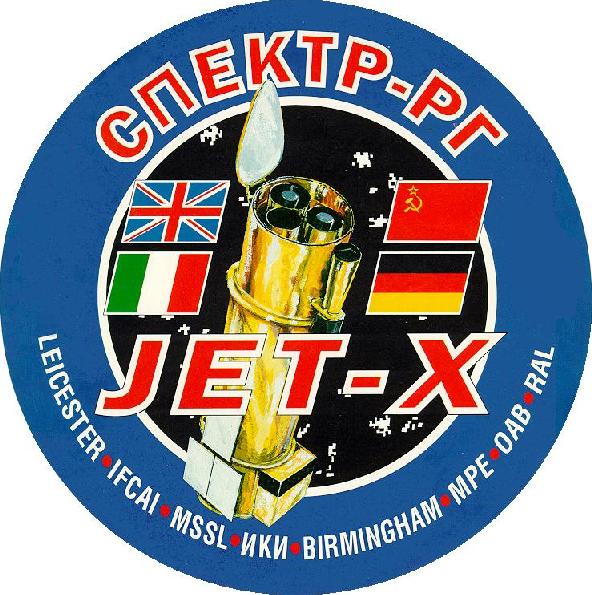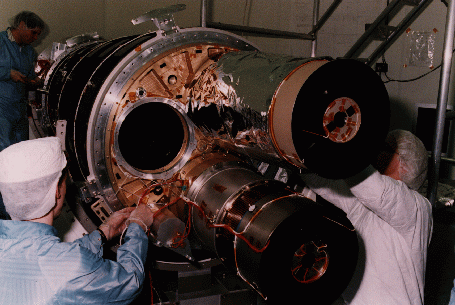

 |
 |
Jet-X at MSSL |
  |
Jet-X - An Overview |
Jet-X consists of two identical, co-aligned, imaging telescopes, each with an angular resolution of 20 arcseconds or better over the energy band 0.3 - 10 keV. Focal plane imaging is provided by passively cooled CCD detectors which match the spatial resolution of the telescopes and provide high spectral resolution, particularly around the 7 keV Fe-line complex.
The x-ray mirrors are 0.3m in diameter with a focal length of 3.5m and consist of a nested array of 12 mirror shells with combined on-axis effective area for two telescopes of 360 cm2 at 1.5 keV and 140 cm2 at 8.0 keV. the field of view is 20 arcmin radius and the 20 arcsec angular resolution corresponds to a spatial resolution in the focal plane of 0.340 mm (HPW).
The spatial resolution of the CCD detector in the focal plane depends on the pixel size of 27 x 27 Ám2, which oversamples the focussed image of a point source. Spectroscopic capability is provided by using the CCD to detect individual photons, whose energy is determined from the deposited charge. In silicon the release energy per hole-electron pair is 3.65 eV.
A large area three-phase MOS frame transfer CCD fabricated on high resistivity silicon and operated with deep depletion has been developed for JETX. Front illumination has been chosen, with one electrode fabricated with a wide but thin polysilicon layer to minimise the reduction in low energy response caused by photon absorption in the electrode structure. The combined response of the CCD and the x-ray mirror covers a bandpass from 0.3 to 10 keV.
Spacecraft drift and thermal distortion over long, 105 sec, observations would lead to image blurring and loss of sensitivity. However, JETX has an attitude monitor (plus a second in cold redundancy) to measure the instrument pointing direction to 5 arcsec, at 1 sec intervals, and thereby allow drift in pointing between successive CCD frame images (integration time 2.5 sec) to be corrected in the data analysis. The attitude monitor detects and monitors positions of up to four stars in its 4 deg x 5.5 deg field of view, and a post facto attitude solution for JETX to 30 arcsec precision can be established through data processing on the ground.
A silicon radiation monitor detector measures the ambient cosmic particle radiation levels, so that the X-ray telescopes can be switched off during solar flares and passages through theEarth's radiation belts.
Astrophysics
group Homepage
MSSL Homepage